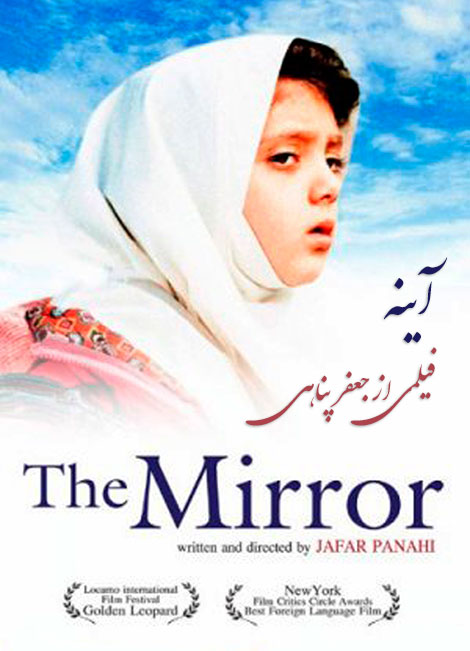Introduction:
Directed by the visionary filmmaker Jafar Panahi, “The Mirror” (1997) stands as a unique and enigmatic entry in the world of cinema, blurring the lines between documentary and drama. Released as a Documentary/Drama, the film invites audiences on a contemplative journey through the intricate tapestry of reality and fiction. In this extensive review, we will unravel the layers of narrative complexity, thematic richness, and the directorial prowess that defines “The Mirror.”
I. Overview of the Film:
“The Mirror” presents a narrative that challenges conventional storytelling structures. The film follows the experiences of a young schoolgirl, Mina Mohammad Khani, as she navigates the bustling streets of Tehran, attempting to find her way home. The narrative unfolds with an unconventional blend of documentary realism and staged events, creating an immersive cinematic experience that blurs the boundaries between fiction and reality.
II. Narrative Complexity:
- Blurring the Lines:
- One of the defining features of “The Mirror” is its deliberate blurring of the lines between documentary and drama. Panahi employs a quasi-fictional approach, weaving real-life situations with staged sequences, leaving the audience in a constant state of ambiguity.
- Unpredictable Storytelling:
- The narrative unfolds in an unpredictable manner, devoid of a conventional plot structure. The film challenges the audience to relinquish expectations of a linear storyline, prompting a deeper engagement with the characters and their surroundings.
III. Themes Explored:
- Childhood and Independence:
- “The Mirror” delves into the theme of childhood and the quest for independence. Mina’s journey becomes a metaphor for the process of growing up and the challenges of navigating the complexities of the adult world.
- Cinematic Self-Reflection:
- The film serves as a form of cinematic self-reflection, inviting viewers to question the nature of filmmaking itself. Panahi’s unconventional approach prompts contemplation on the thin line between reality and fiction in the realm of cinema.
IV. Directorial Prowess:
- Jafar Panahi’s Signature Style:
- “The Mirror” reflects Jafar Panahi’s signature directorial style, characterized by a minimalist approach and a deep exploration of societal and personal themes. His ability to capture authenticity within staged scenes contributes to the film’s unique atmosphere.
- Seamless Integration of Reality:
- Panahi seamlessly integrates real-life elements into the narrative, utilizing non-professional actors and unscripted situations. This approach adds an authentic layer to the film, blurring the boundaries between the director’s vision and the unpredictability of reality.
V. Cinematography and Visual Language:
- Documentary Realism:
- The cinematography in “The Mirror” adopts a documentary realism, capturing the raw and unfiltered aspects of Tehran’s urban landscape. Handheld cameras and natural lighting contribute to the film’s immersive and authentic visual language.
- Symbolic Imagery:
- Panahi employs symbolic imagery to convey deeper meanings. From reflective surfaces to the bustling urban environment, each visual element contributes to the film’s multifaceted narrative and thematic exploration.
VI. Performances:
- Mina Mohammad Khani:
- Mina Mohammad Khani, the young protagonist, delivers a captivating performance that adds to the film’s authenticity. Her ability to seamlessly navigate between scripted scenes and real-life situations enhances the immersive quality of the narrative.
- Non-Professional Cast:
- The decision to cast non-professional actors, particularly in supporting roles, enhances the film’s documentary feel. The cast’s natural performances contribute to the overall sense of realism that defines “The Mirror.”
VII. Critical Reception:
- International Acclaim:
- “The Mirror” received international acclaim for its innovative approach to storytelling and its nuanced exploration of themes. Film festivals and critics recognized the film’s contribution to the evolving landscape of Iranian cinema.
- Impact on Film Criticism:
- The film’s unconventional narrative and Panahi’s directorial choices prompted discussions in film criticism circles. “The Mirror” became a subject of analysis, contributing to a broader discourse on the intersection of reality and fiction in cinema.
VIII. Cultural and Social Context:
- Reflections of Iranian Society:
- “The Mirror” provides glimpses into Iranian society, capturing the everyday struggles and aspirations of its people. The film serves as a window into the cultural and social fabric of Tehran, offering audiences a unique perspective.
- Cinematic Resistance:
- Within the context of Iranian cinema, “The Mirror” can be seen as an act of cinematic resistance. Panahi’s ability to create art that challenges conventions and navigates restrictions speaks to the resilience of artists in the face of societal constraints.
IX. Legacy and Influence:
- Pioneering Approach:
- “The Mirror” is often cited as a pioneering work that blurs the boundaries between fiction and reality. Its influence can be traced in subsequent films that experiment with narrative structures and challenge traditional storytelling norms.
- Impact on Jafar Panahi’s Career:
- The film holds significance in Jafar Panahi’s career, marking a point of departure in his exploration of unconventional storytelling methods. The director’s subsequent works continue to exhibit a commitment to pushing the boundaries of cinematic expression.
X. Conclusion:
“The Mirror” stands as a cinematic gem that defies easy categorization, inviting viewers on a contemplative journey through the maze of reality and fiction. Jafar Panahi’s directorial brilliance shines through as he navigates the complexities of storytelling with an unorthodox yet deeply impactful approach. The film’s legacy lies not only in its contribution to Iranian cinema but also in its ability to challenge audiences to rethink the nature of cinematic narratives. As “The Mirror” continues to captivate and perplex audiences, its enigmatic allure remains an enduring testament to the boundless possibilities of storytelling in the world of cinema.
